In the figure shown P is a point on the surface of an imaginary sphere.
Column-IColumn-II(A)Electric field at point P(p)due to q1only(B)Electric flux through a small area at P(q)due to q2only(C)Electric flux through whole sphere(r)due to both q1andq2
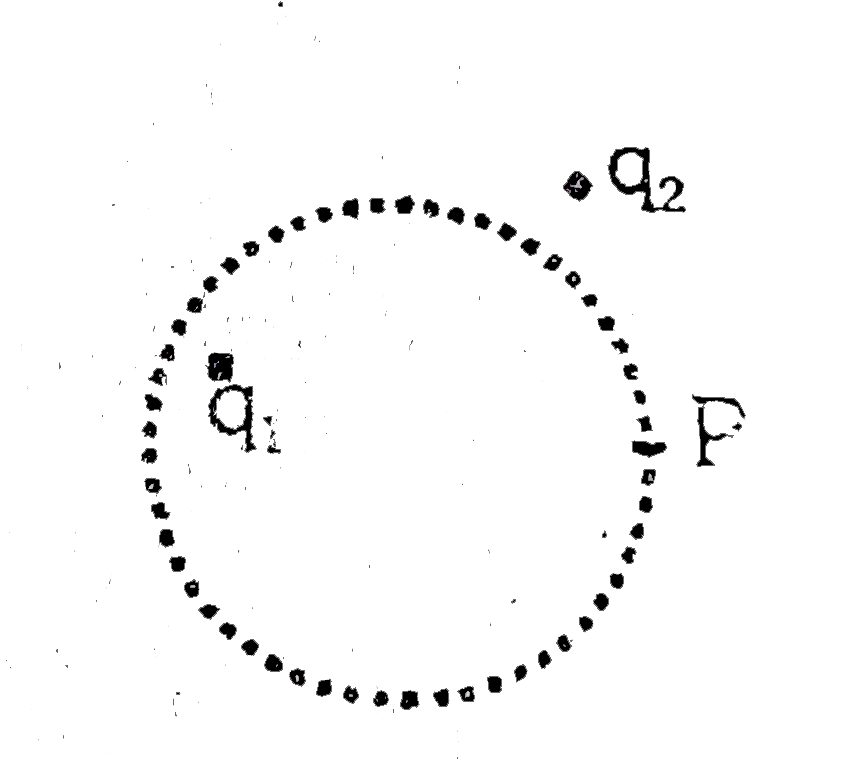 Solution in Gujrati
Solution in Gujrati
The correct Answer is:(A) r (B) r (C) p
(A) Electric at a point is the vector sum of all individual field at that point
(B) Electric flux ∮→E.d→S=qenc∈0
(C) Electric flux ∮→E.d→S=qenclosed∈0
Topper's Solved these Questions
- MISCELLANEOUSBOOK - ALLEN CHAPTER - MISCELLANEOUSEXERCISE - Exercise-05
1 Videos
- MISCELLANEOUSBOOK - ALLEN CHAPTER - MISCELLANEOUSEXERCISE - Exersice-05
1 Videos
- MISCELLANEOUSBOOK - ALLEN CHAPTER - MISCELLANEOUSEXERCISE - Exercise-04
1 Videos
- KINEMATICS (MOTION ALONG A STRAIGHT LINE AND MOTION IN A PLANE)BOOK - ALLEN CHAPTER - KINEMATICS (MOTION ALONG A STRAIGHT LINE AND MOTION IN A PLANE)EXERCISE - BEGINNER S BOX-7
8 Videos
- PHYSICAL WORLD, UNITS AND DIMENSIONS & ERRORS IN MEASUREMENT BOOK - ALLEN CHAPTER - PHYSICAL WORLD, UNITS AND DIMENSIONS & ERRORS IN MEASUREMENT EXERCISE - EXERCISE-IV
7 Videos
Similar Questions
Column-I gives certain situations involving two thin conducting shells connected by a conducting wire via a key K. In all situation one sphere has net charge +q and other sphere has no net charge. After the key K is pressed, column-II gives some resulting effect.
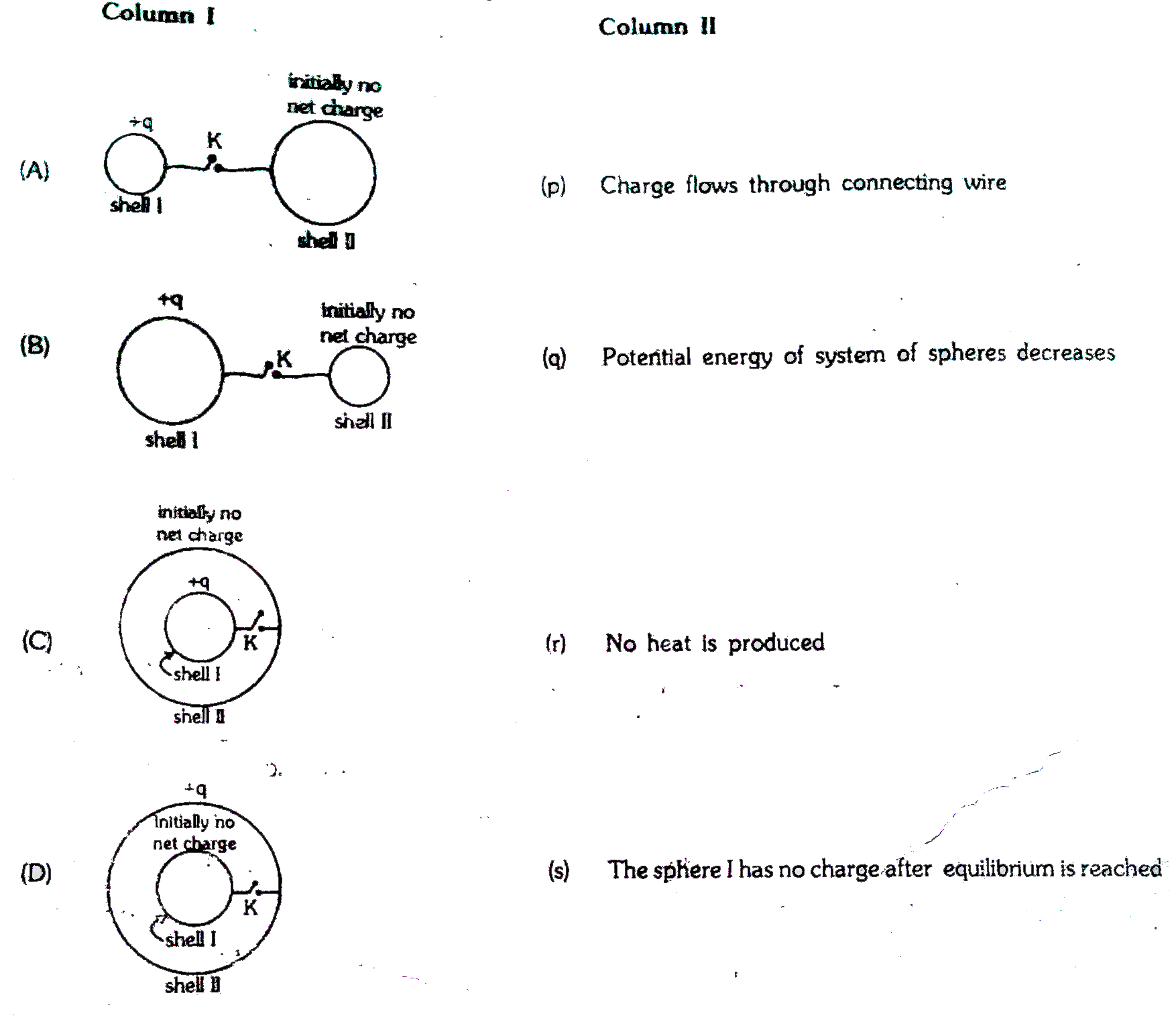
View SolutionA spherical metallic conductor has a spherical cavity. A positive charge is placed inside the cavity at its centre. Another positive charge is placed outside it. The conductor is initially electrically neutral.
Column I (Cause)Column II (Effect)(A)If outside is shifted to other position(p)Distribution of charge on innner surfaceof cavity charges(B)If inside charge is shifted to other position(q)Distribution of charge on outer surface ofconductor charges(C)If magnitude of charge inside cavity is(r)Electric potential at the centre of conductorincreasedchanges due to charges presenton outer surface of conductor(D)If conductor is earthed(s)Force on the charge placed insidecavity changes
View SolutionIn each situation of Column-I two elelctric dipoles having moments →p1 and →p1 of same magnitude (that is ,p1=p2) are placed on x-axis symmetrically about origin in different orientations as shown. In column-II certain inferences are drawn for these two dipoles. Then match the different orientations of dipole in column-I with the corresponding result in column-II.
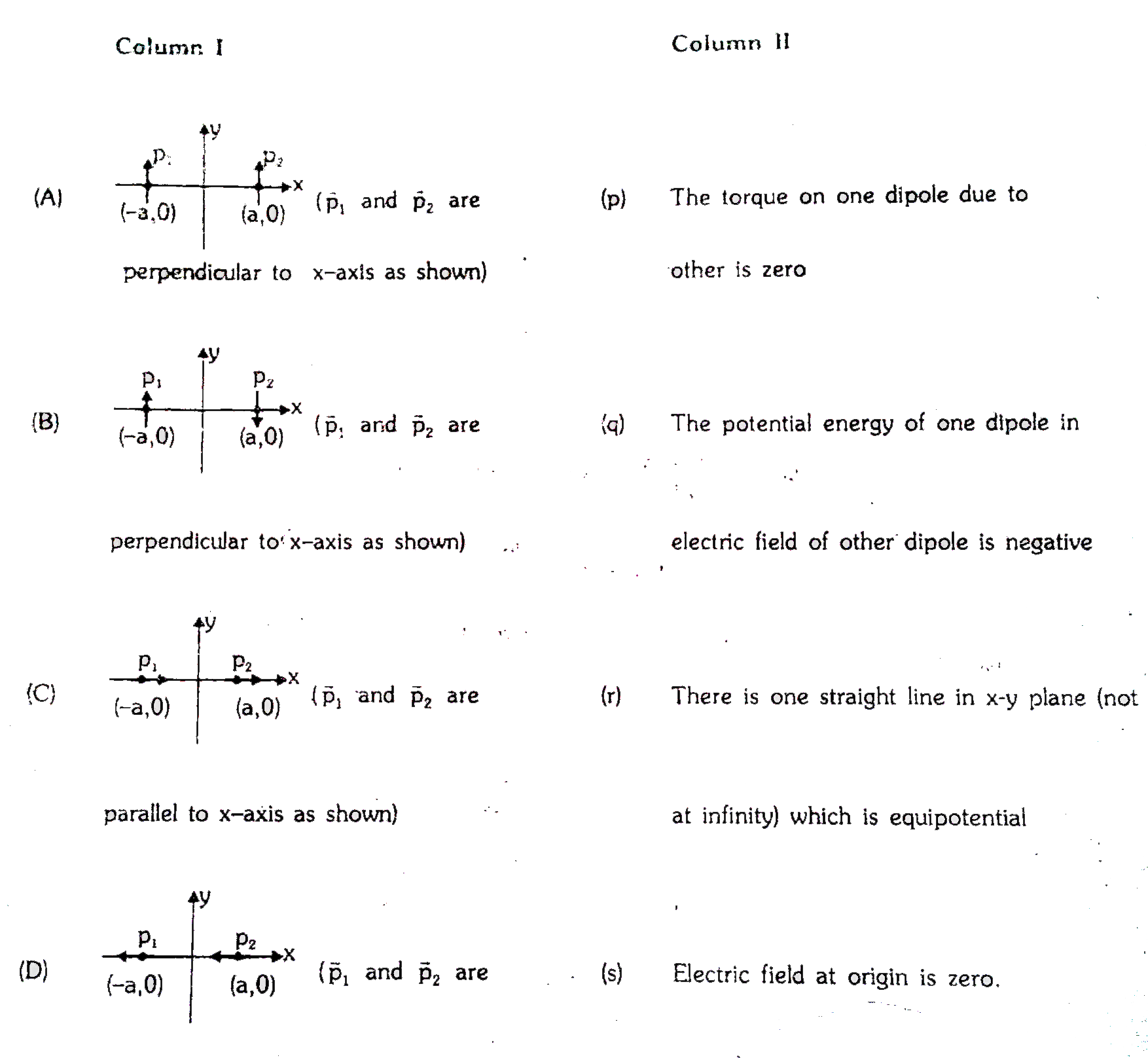
View SolutionA football player kicks a ball at an angle of 30∘ with an initial speed of 20 m/s. Assuming that the ball travels in a vertical plane, calculate (a) the time at which the ball reaches the highest point (b) the maximum height reached (c) the horizontal range of the ball (d) the time for which the ball is in the air, (g=10m/s2)
View SolutionAssertion : Gravitational forces do not depend on the medium between the masses.
Reason : Mediating particle responsible for gravitational force is graviton.
View SolutionIf the points (0,0),(3,3),(p,q) form an equilateral triangle and q_(1),q_(2) are the two values of q then q_(1)+q_(2)=
View SolutionThe electric flux for Gaussian surface A that enclose the charge particles in free space is (given q_(1)= -14nC,q_(2)= 78.85nC,q_(3)= -56nC)
View SolutionIn figure below, the point charge Q_(1) causes an electric potential of 60 V and an electric field strength of 30 Vm^(-1) at P . and the point charge Q_(2) separately causes a potential of 120 V and a field strength of 40 Vm^(-1) at P . Which one the following gives possible value of potential and field strength at P due to joint action of Q_(1) and Q_(2) ?
View SolutionCharge q1 is inside the Gaussain surface , charge q2 just outside the surface. Does the electric flux through the surface.Does the electric flux through the surface depend on q1 ? Does it depend on q2 ? Explain.
View SolutionA few electric field lines for a system of two charges Q_(1) and Q_(2) fixed at two different points on the x -axis are shown in the figure. These lines suggest that (i) |Q_(1) | gt |Q_(2)| (ii) |Q_(1)| lt |Q_(2)| (iii) At a finite distance to the left of Q_(1) the electric field is zero (iv) At a finite distance to the right of Q_(2) the electric field is zero
View SolutionTwo points charge q1 and q2(=q1/2) are placed at points A(0,1) and B(1,0) as shown in the figure.The electric field vector at point P(1,1) makes an angle q with the x-axis ,then the angle q is

View SolutionAssertion: Four point charges q1,q2,q3 and q4 are as shown in Fig,The flux over the shown Gaussians surface depends only on charges q1 and q2
Reason:Electric field at all points on Gaussians surface depends on any charges q1 and q2

View SolutionIn the given figure, two point chrges q1 and q2 are placed at distances a and b from centre of a metallic sphere having charge Q.Find electric felds due to the metallic sphere at the point P.
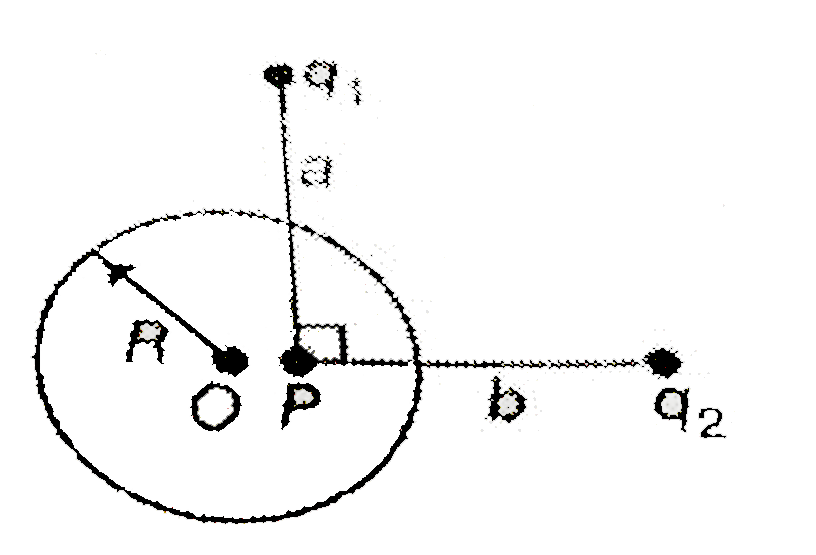
View Solutionचित्र 2.52 में सभी चार आवेशों का परिमाण एक जैसा है। बिन्दु P पर इन द्वारा उत्पन्न वैद्युत क्षेत्र बाईं दिशा में हैं। आवेश q1 ऋणात्मक है। आवेशों q2,q3 और q4, के क्या चिह्न हैं?
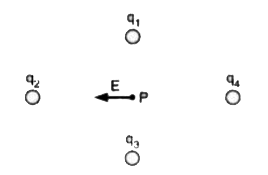
View Solutionचित्र 2.58 में बिन्दु आवेश q1 और q2 की वैद्युत क्षेत्र रेखाएँ दिखाई गई है। q1 और q2 के क्या-क्या चिह्न हैं? यदि रेखाएँ आवेश के अनुपात में खींची गईं हों, तो अनुपात q1/q2 क्या है?

View SolutionElectric force between two point charges q_(1) and q_(2) at rest is F. Now is a charge -q_(1) is placed next to q_(1) . What will be the (a) force on q_(2) due to q_(1) (b) total force on q_(2) ?
View Solution
